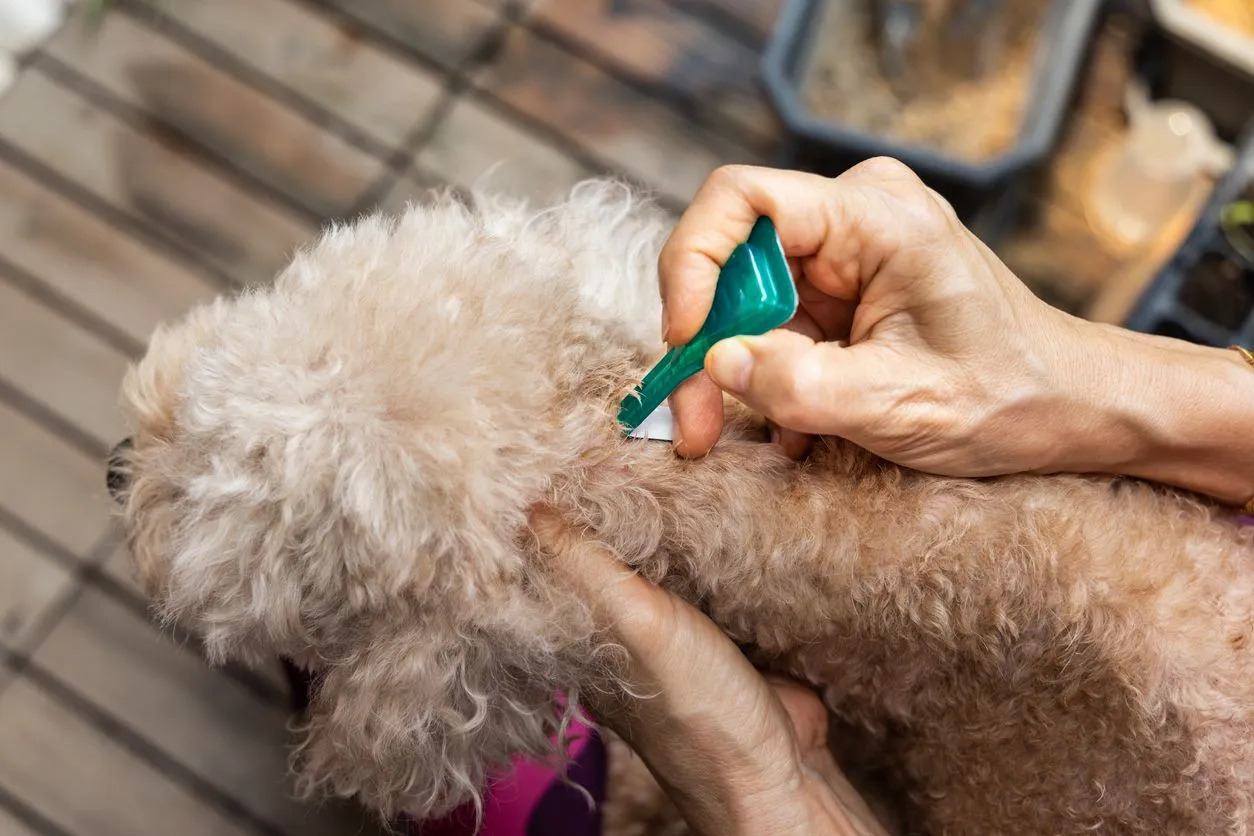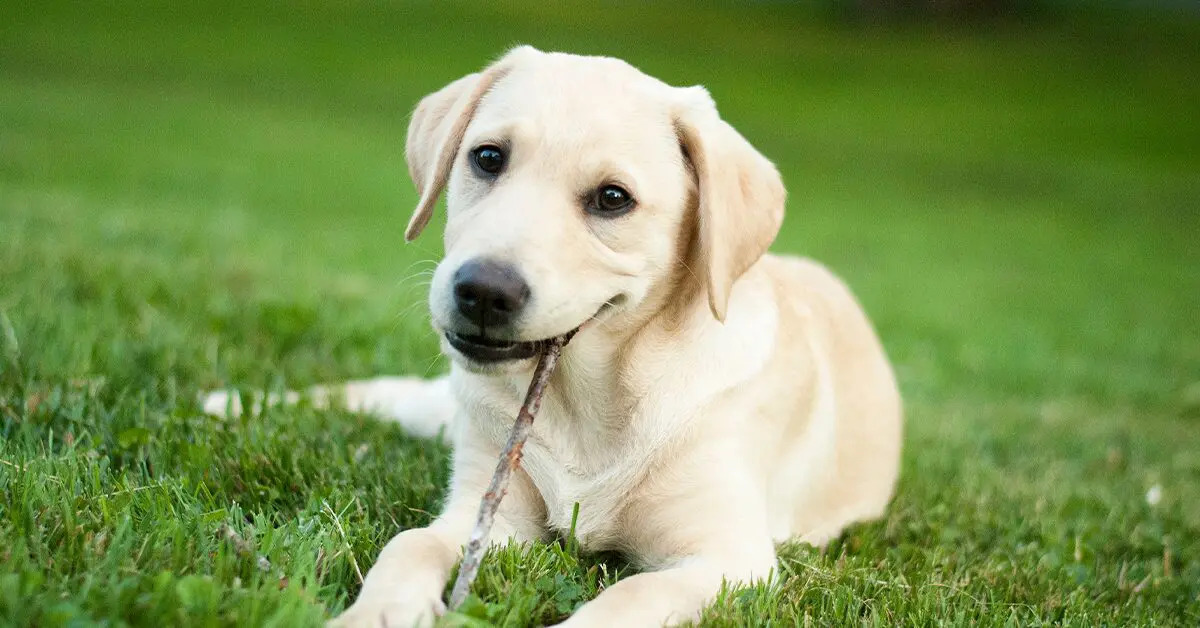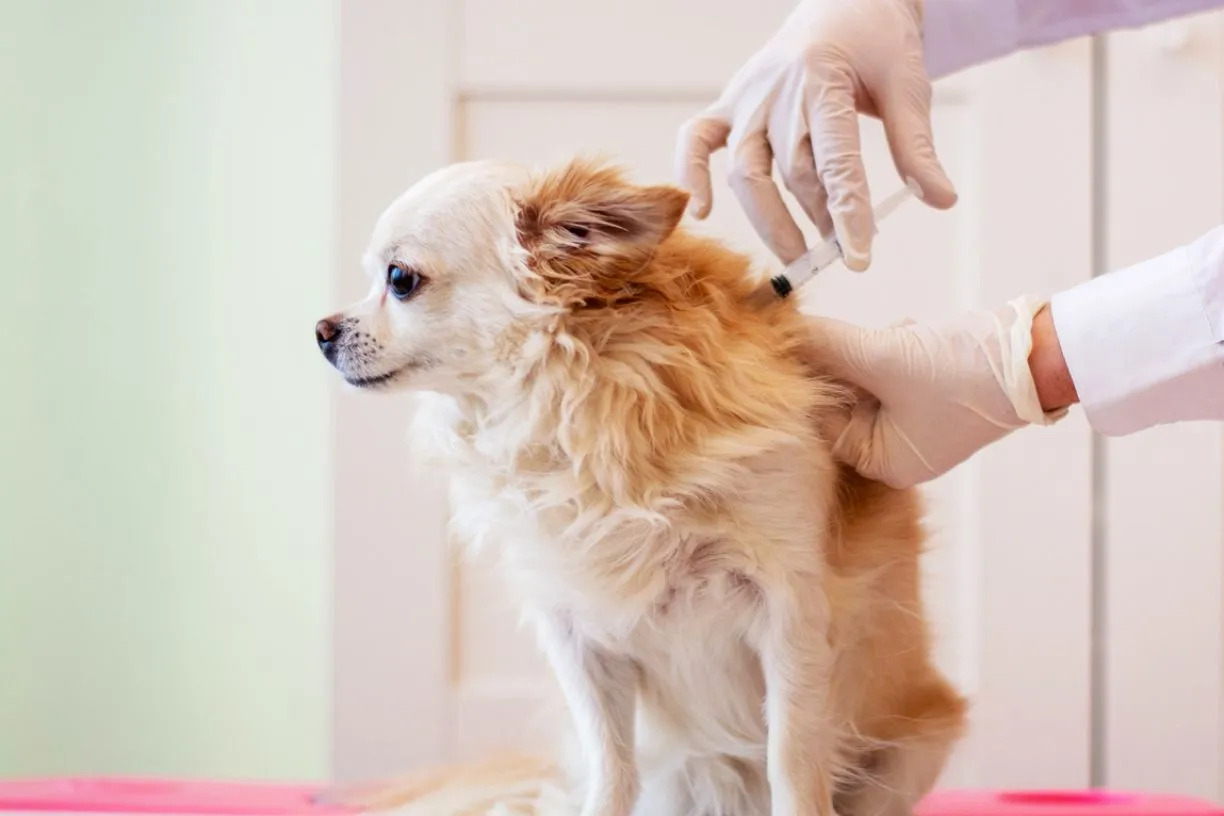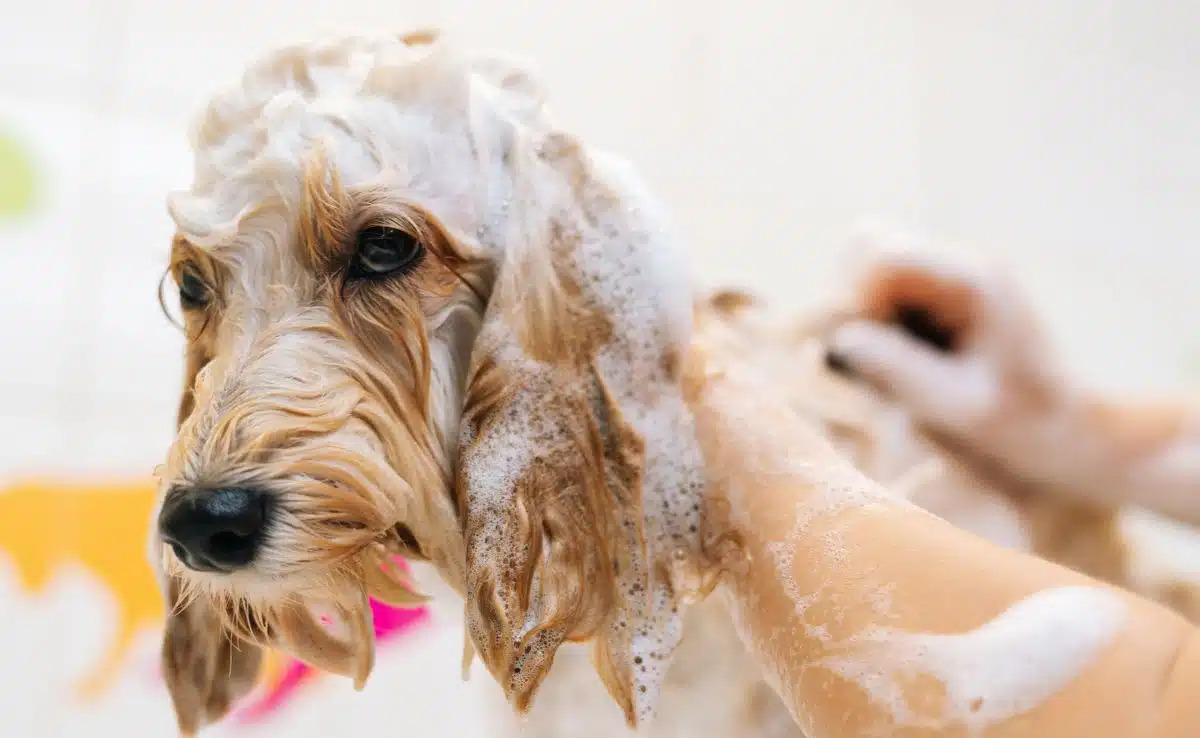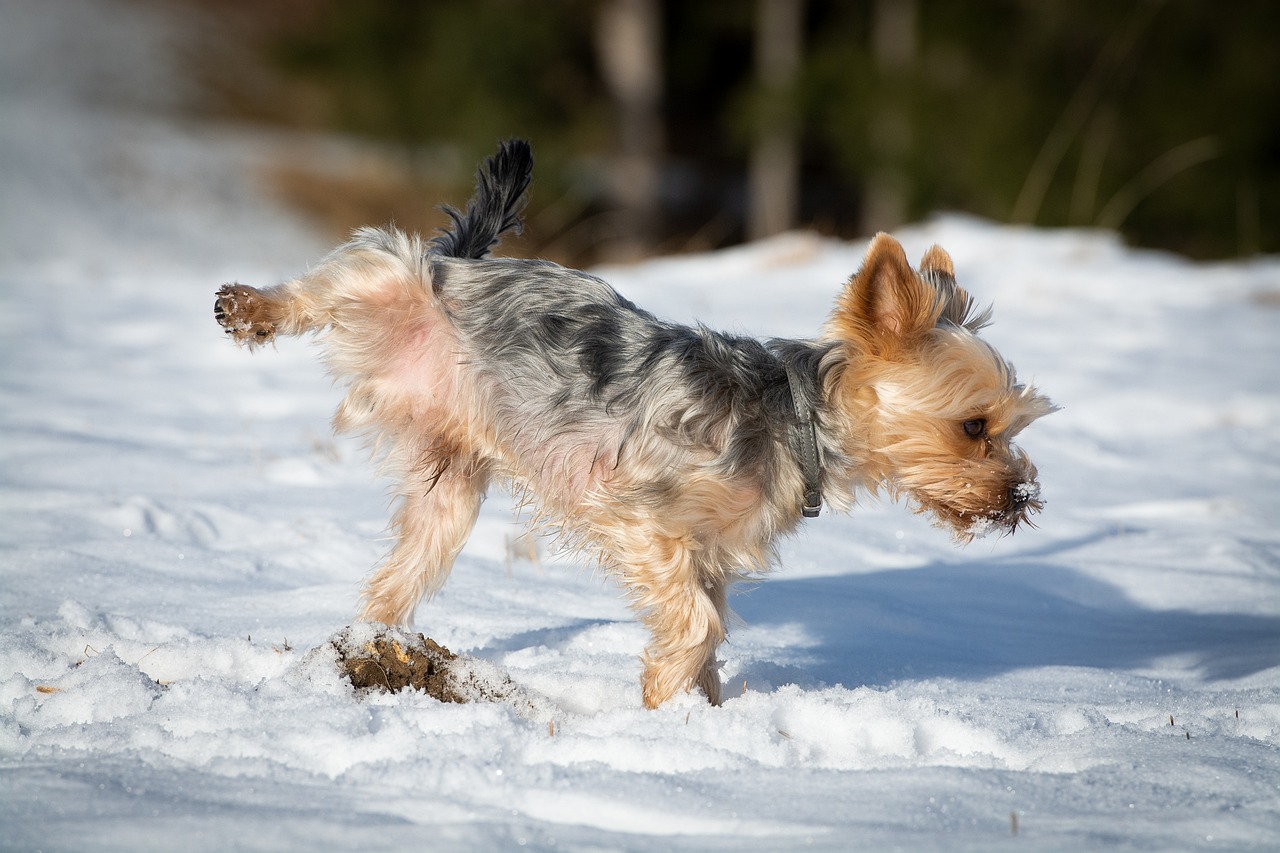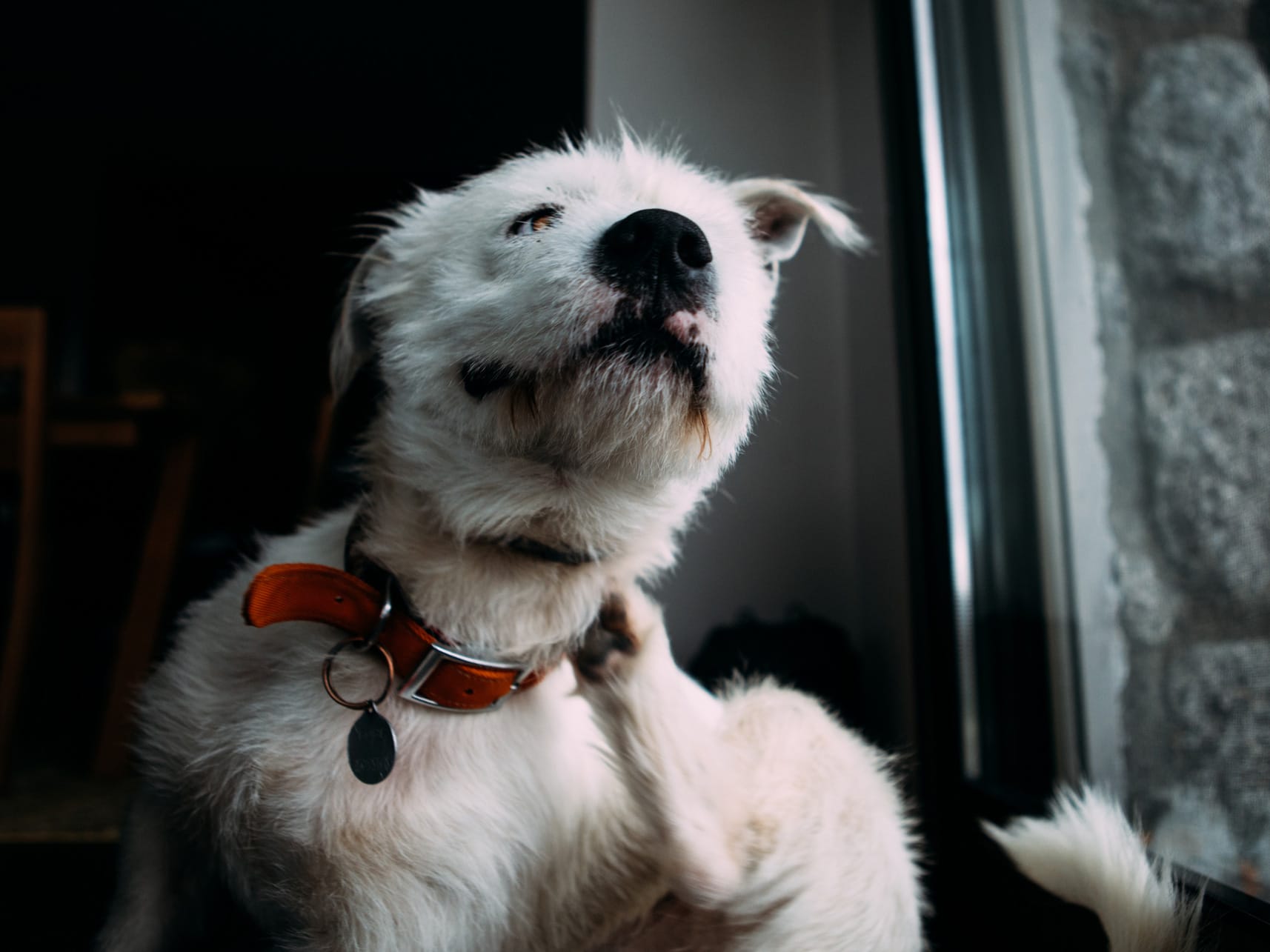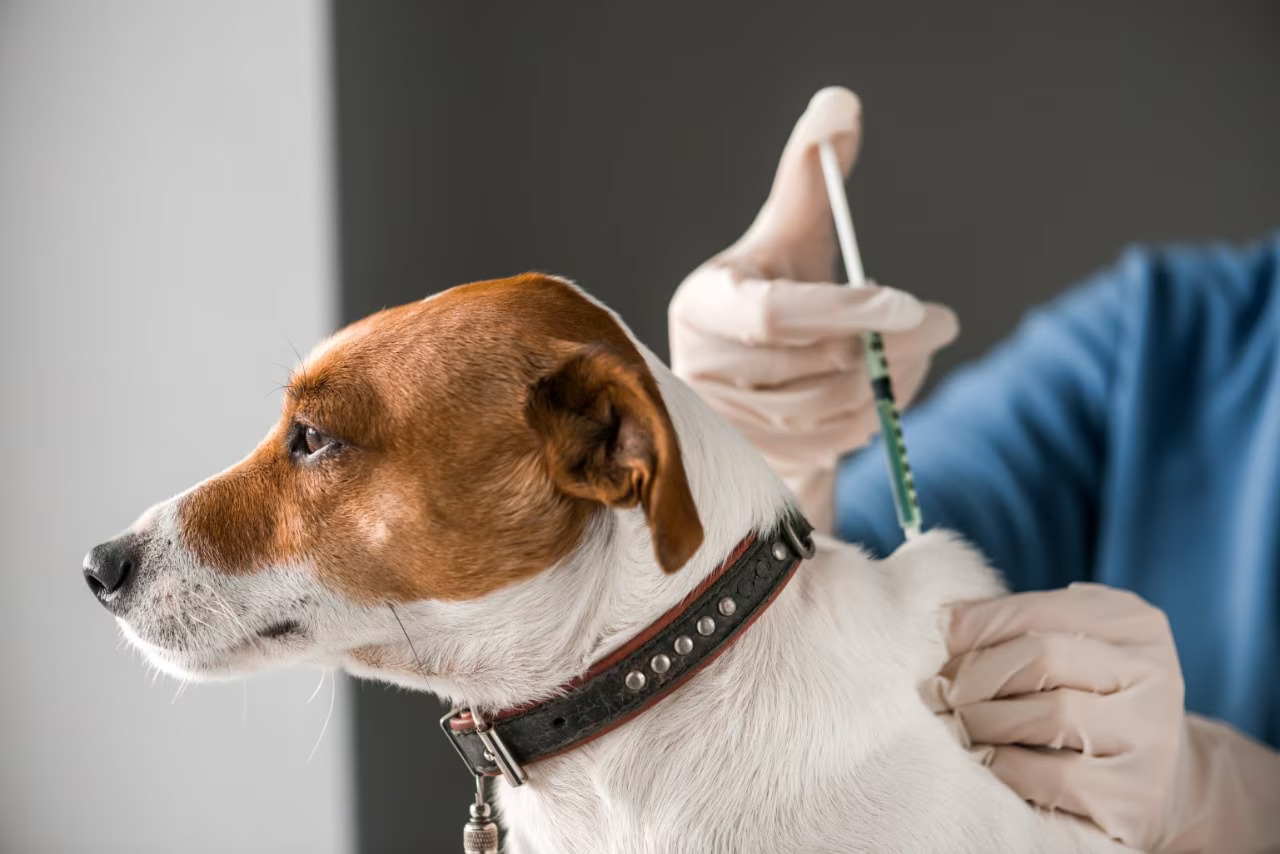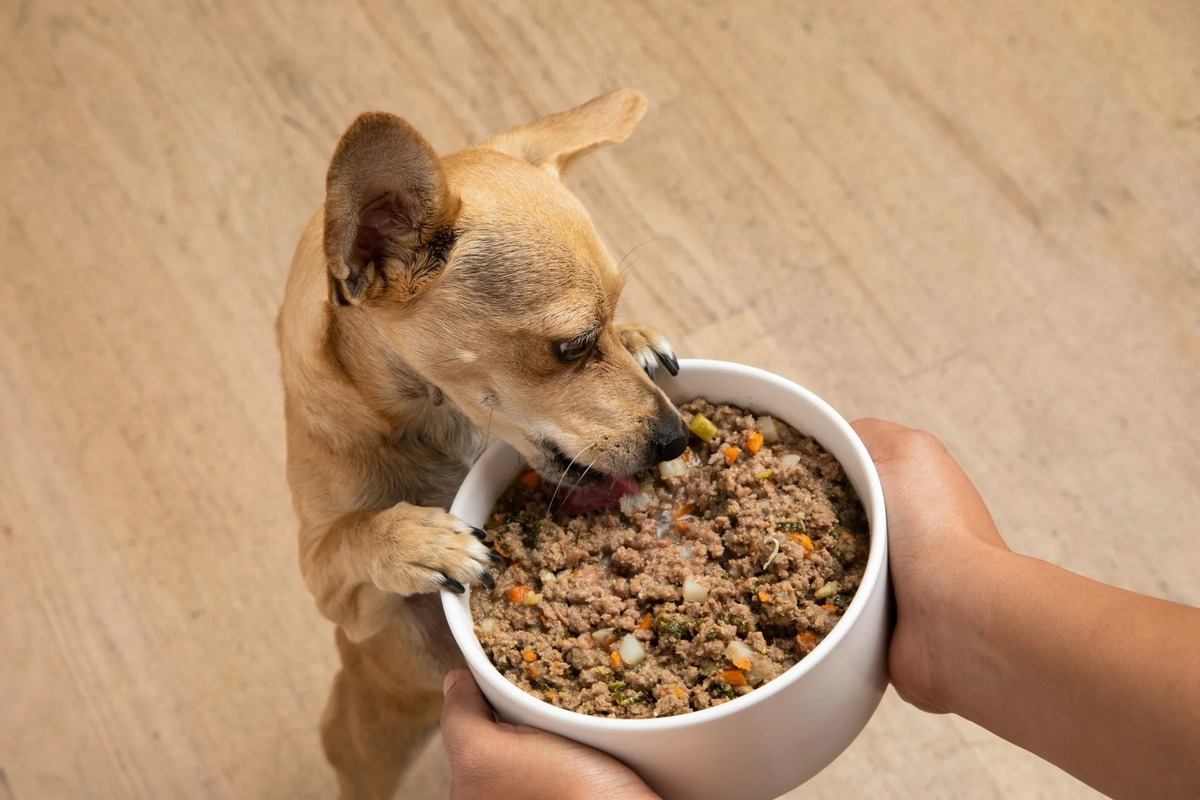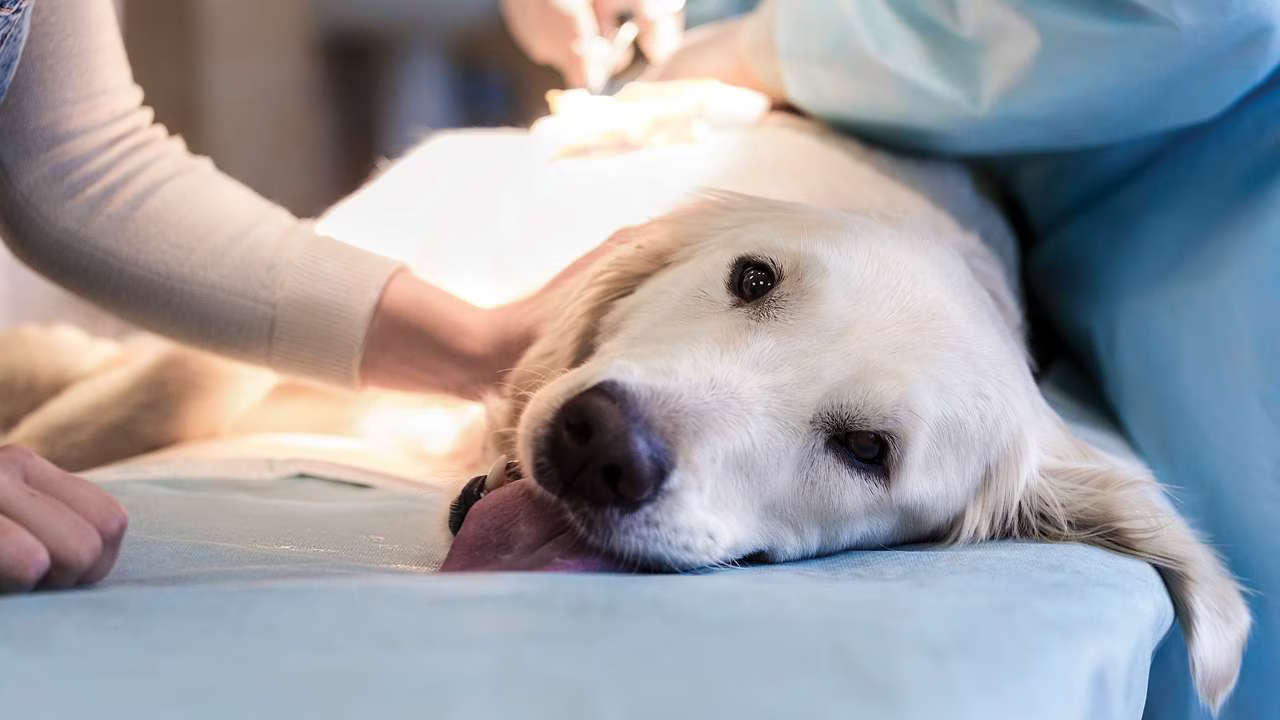Home>Health & Wellness>Common Health Issues>What Helps A Dog With Hair Loss From Fleas
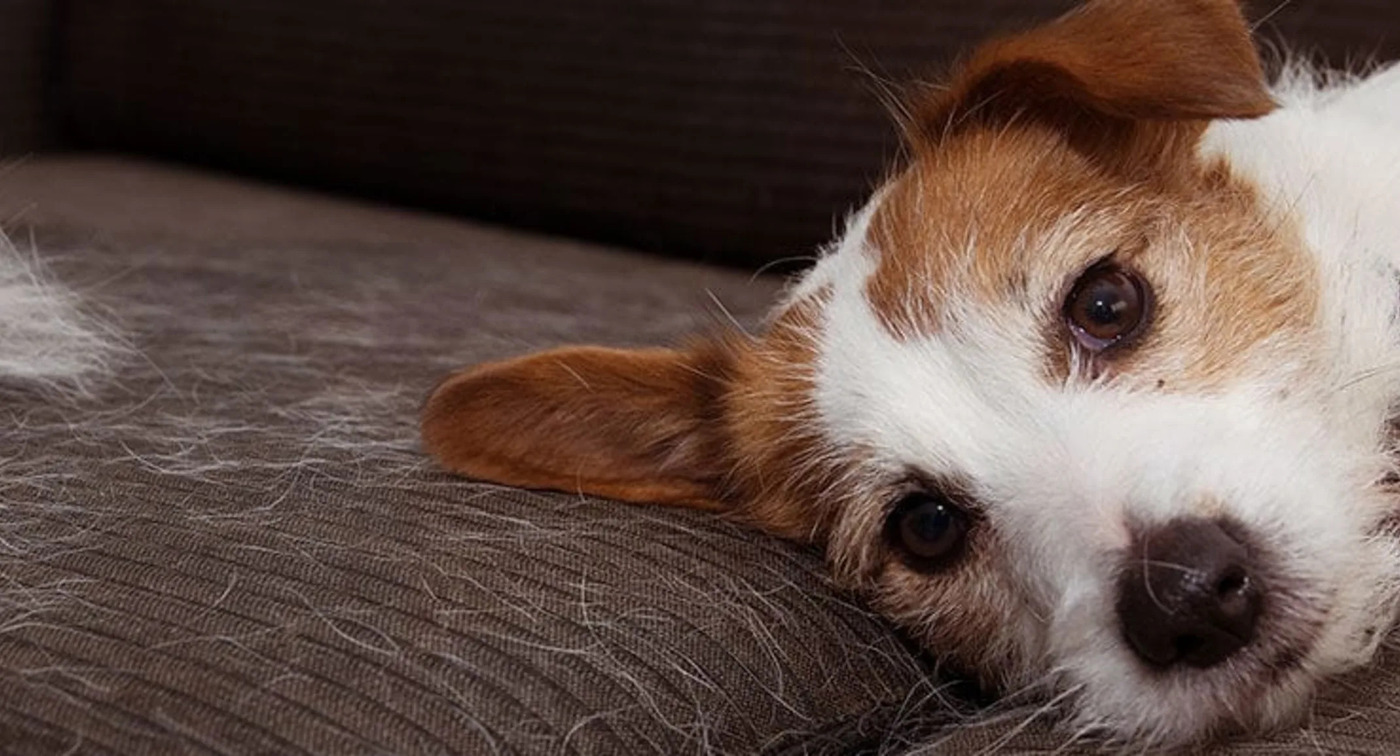

Common Health Issues
What Helps A Dog With Hair Loss From Fleas
Published: February 15, 2024
Learn how to address hair loss in dogs caused by fleas and other common health issues. Discover effective solutions to help your furry friend.
(Many of the links in this article redirect to a specific reviewed product. Your purchase of these products through affiliate links helps to generate commission for Pawsomeoldies.com, at no extra cost. Learn more)
Table of Contents
Introduction
Hair loss in dogs can be a distressing issue for both pets and their owners. It can manifest in various forms, from patchy bald spots to overall thinning of the coat, and may be accompanied by itching and discomfort for the affected canine. While there are several factors that can contribute to hair loss in dogs, one common culprit is flea infestation. Understanding the underlying causes of hair loss and addressing the root problem is crucial in helping our furry friends regain their healthy coat and overall well-being.
Hair loss in dogs can be a distressing issue for both pets and their owners. It can manifest in various forms, from patchy bald spots to overall thinning of the coat, and may be accompanied by itching and discomfort for the affected canine. While there are several factors that can contribute to hair loss in dogs, one common culprit is flea infestation. Understanding the underlying causes of hair loss and addressing the root problem is crucial in helping our furry friends regain their healthy coat and overall well-being.
Understanding the Causes of Hair Loss in Dogs
Hair loss in dogs, medically known as alopecia, can stem from various factors, including parasites, allergies, hormonal imbalances, infections, and underlying health conditions. Understanding the root causes of hair loss is essential in providing effective treatment and support for our canine companions.
One common cause of hair loss in dogs is parasitic infestation, particularly by fleas. These tiny, wingless insects feed on the blood of their hosts, causing irritation and discomfort. As a dog scratches and bites at the affected areas, it can lead to hair loss and skin damage. Additionally, the saliva of fleas contains allergens that can trigger allergic reactions in some dogs, exacerbating the issue.
Allergies, both environmental and food-related, can also contribute to hair loss in dogs. Environmental allergens such as pollen, dust mites, and mold can lead to skin irritation and subsequent hair loss. Similarly, certain ingredients in commercial dog food or treats may trigger allergic reactions, resulting in dermatitis and alopecia.
Hormonal imbalances, such as hypothyroidism or Cushing's disease, can disrupt the normal hair growth cycle in dogs, leading to hair loss. These conditions affect the production and regulation of hormones, impacting the health of the skin and coat.
Infections, whether bacterial, fungal, or parasitic, can cause hair loss in dogs. Common skin infections such as ringworm can result in circular patches of hair loss, while bacterial infections can lead to inflammation and hair follicle damage.
Underlying health conditions, such as autoimmune diseases and cancer, may also manifest in hair loss as a secondary symptom. These conditions can compromise the immune system and overall health of the dog, impacting the condition of the coat.
Understanding the multifaceted causes of hair loss in dogs is crucial in formulating a comprehensive approach to diagnosis and treatment. By identifying the underlying factors contributing to alopecia, pet owners and veterinarians can work together to address the specific needs of each dog, promoting not only hair regrowth but also overall health and well-being.
Identifying Fleas as the Culprit
Fleas are notorious pests that can wreak havoc on a dog's skin and coat, leading to hair loss and discomfort. Identifying fleas as the culprit behind a dog's hair loss is crucial in implementing targeted treatment and prevention strategies. Understanding the signs of flea infestation and its impact on a dog's well-being is essential for pet owners and veterinarians alike.
One of the primary indicators of fleas infesting a dog is excessive itching and scratching. When fleas bite, they inject saliva into the dog's skin, causing irritation and triggering an allergic reaction in some canines. This allergic response leads to intense itching, prompting the dog to scratch, bite, and chew at the affected areas in an attempt to alleviate the discomfort. As a result, the constant scratching can lead to hair loss, particularly in areas where the fleas congregate, such as the base of the tail, the abdomen, and the inner thighs.
Furthermore, the presence of flea dirt, which appears as tiny black specks resembling ground pepper, is a telltale sign of flea infestation. Flea dirt is actually flea feces consisting of digested blood, and it often accumulates on the dog's skin and coat. When pet owners part the dog's fur and observe these dark specks, it indicates an active flea infestation that requires prompt attention.
In severe cases of flea infestation, pet owners may even spot live fleas scurrying through their dog's fur or on the dog's bedding. These tiny, reddish-brown insects are agile and adept at evading detection, but a close examination of the dog's coat and immediate surroundings can reveal their presence.
Additionally, the development of hot spots, also known as acute moist dermatitis, can be attributed to flea bites. Hot spots are inflamed, moist, and often painful areas on the dog's skin that result from incessant licking, chewing, and scratching in response to flea bites. These irritated patches of skin can lead to hair loss and secondary bacterial infections, further exacerbating the dog's discomfort.
By recognizing these signs of flea infestation, pet owners can take proactive measures to address the issue and alleviate their dog's distress. From implementing flea control measures to seeking veterinary guidance on appropriate treatment, identifying fleas as the culprit behind a dog's hair loss empowers pet owners to take targeted action in restoring their canine companion's skin and coat health.
Treating Fleas and Preventing Reinfestation
Addressing flea infestations in dogs requires a multifaceted approach aimed at both eradicating existing fleas and preventing reinfestation. By implementing comprehensive flea control measures, pet owners can effectively alleviate their dog's discomfort and promote a healthy, flea-free environment for their beloved canine companions.
1. Flea Treatment Products
Utilizing veterinarian-recommended flea treatment products is a pivotal step in combating fleas. Topical spot-on treatments, oral medications, and flea collars are among the options available to pet owners. These products contain active ingredients that target fleas at various stages of their life cycle, effectively eliminating existing infestations.
Read more: How Do I Help My Dog’s Itch From Fleas
2. Environmental Flea Control
Thoroughly cleaning and treating the indoor and outdoor environments where the dog resides is essential in preventing reinfestation. Vacuuming carpets, upholstery, and pet bedding helps remove flea eggs, larvae, and pupae, while washing these items in hot water can further eliminate fleas at different life stages. Additionally, using pet-safe flea control products in the yard and outdoor areas can help minimize the presence of fleas in the environment.
3. Regular Grooming and Cleaning
Regular grooming practices, such as brushing the dog's coat and inspecting for signs of fleas, contribute to early detection and prompt intervention. Bathing the dog with a vet-approved flea shampoo can help reduce the existing flea population on the dog's skin and coat. Furthermore, maintaining a clean living environment through regular cleaning and sanitation efforts can deter flea infestations.
4. Consultation with a Veterinarian
Seeking guidance from a veterinarian is crucial in developing a tailored flea control plan for the affected dog. Veterinarians can recommend specific flea treatment products based on the dog's health status and individual needs. Additionally, they can provide valuable insights into preventing future flea infestations and addressing any underlying skin issues resulting from the infestation.
5. Preventative Measures
Implementing year-round flea prevention measures is key to safeguarding the dog against future infestations. Consistent use of veterinarian-recommended flea preventatives, such as monthly topical treatments or oral medications, can effectively protect the dog from fleas and minimize the risk of reinfestation.
By diligently following these comprehensive flea treatment and prevention strategies, pet owners can effectively combat fleas and create a comfortable, flea-free environment for their canine companions. Prioritizing proactive flea control measures not only supports the dog's skin and coat health but also contributes to their overall well-being and quality of life.
Read more: What Can You Feed A Dog To Help With Fleas
Supporting Hair Regrowth in Dogs
Supporting hair regrowth in dogs following hair loss, particularly due to flea infestation, requires a holistic approach aimed at addressing both the underlying cause and promoting optimal skin and coat health. By implementing targeted strategies and providing essential support, pet owners can facilitate the regrowth of their dog's healthy coat while ensuring their overall well-being.
1. Addressing Skin Irritation
Addressing any existing skin irritation resulting from flea bites is crucial in promoting hair regrowth. Irritated and inflamed skin can impede the regrowth process, so it's essential to soothe the affected areas. Utilizing veterinarian-recommended topical treatments, such as soothing sprays or medicated creams, can help alleviate discomfort and support the healing of the skin.
2. Nutritional Support
Ensuring the dog receives a balanced and nutritious diet is fundamental in promoting hair regrowth. High-quality dog food containing essential nutrients, such as omega-3 fatty acids, biotin, and protein, supports skin and coat health. Additionally, incorporating supplements, as recommended by a veterinarian, can further enhance the dog's overall nutritional intake, contributing to the regrowth of a healthy coat.
3. Regular Grooming and Hygiene
Regular grooming practices play a significant role in promoting hair regrowth. Gentle brushing stimulates blood circulation to the skin, promoting the distribution of natural oils and encouraging new hair growth. Furthermore, maintaining proper hygiene through regular baths with vet-approved shampoos helps keep the skin clean and supports the regrowth of a healthy coat.
4. Monitoring for Reinfestation
Continuously monitoring the dog for signs of flea reinfestation is essential in preventing further hair loss. Regularly inspecting the dog's skin and coat for fleas, flea dirt, or signs of itching helps detect and address potential infestations promptly. By staying vigilant, pet owners can safeguard their dog's skin and coat health, minimizing the risk of recurring hair loss due to fleas.
5. Veterinary Guidance
Seeking guidance from a veterinarian is invaluable in supporting the regrowth of the dog's healthy coat. Veterinarians can assess the dog's skin and coat condition, provide tailored recommendations for promoting hair regrowth, and address any underlying issues contributing to the hair loss. Additionally, they can offer insights into long-term skin and coat care to maintain optimal health.
By implementing these supportive measures and prioritizing the dog's skin and coat health, pet owners can effectively facilitate the regrowth of a healthy coat following hair loss from fleas. Consistent care, proper nutrition, and proactive flea prevention contribute to the overall well-being of the dog, ensuring they can enjoy a lustrous and resilient coat.
Conclusion
In conclusion, addressing hair loss in dogs, particularly when attributed to flea infestation, requires a comprehensive understanding of the underlying causes and targeted strategies for treatment and prevention. Hair loss in dogs can stem from various factors, including parasites, allergies, hormonal imbalances, infections, and underlying health conditions. However, identifying fleas as the culprit behind a dog's hair loss is pivotal in implementing effective measures to alleviate the discomfort and support the regrowth of a healthy coat.
Recognizing the signs of flea infestation, such as excessive itching, presence of flea dirt, and hot spots, empowers pet owners to take prompt action in eradicating fleas and creating a comfortable environment for their canine companions. By utilizing veterinarian-recommended flea treatment products, implementing environmental flea control measures, and maintaining regular grooming and cleaning practices, pet owners can effectively address flea infestations and prevent reinfestation, thereby supporting the dog's skin and coat health.
Furthermore, supporting hair regrowth in dogs following hair loss from fleas involves addressing skin irritation, providing essential nutritional support, maintaining regular grooming and hygiene practices, monitoring for reinfestation, and seeking guidance from a veterinarian. These supportive measures contribute to the regrowth of a healthy coat and the overall well-being of the dog, ensuring they can thrive with a lustrous and resilient coat.
By prioritizing proactive flea control, proper nutrition, and attentive skin and coat care, pet owners can significantly enhance the quality of life for their canine companions. Understanding the multifaceted nature of hair loss in dogs and the specific impact of flea infestation enables pet owners to take informed and targeted steps in promoting their dog's skin and coat health.
In essence, by addressing hair loss in dogs with a focus on flea prevention, treatment, and supportive care, pet owners can help their beloved companions regain a healthy and vibrant coat, fostering a happier and more comfortable life for their furry friends.

